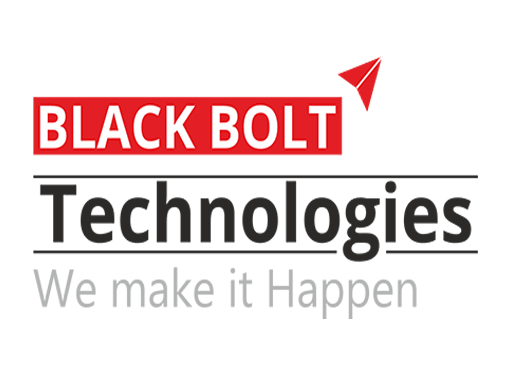Paid vs Organic Social Media: Which suits for Your Business?
In today’s digital age, the Internet has emerged as the primary means of mass communication. Especially through social media platforms. Choosing between traditional social media and paid social media isn’t always easy. These approaches are not the same. This makes it easier to compare the two methods to see how they apply to different businesses. In this blog, we’ll discuss the differences. Pros and cons of paid and organic social media To help you determine which method is the choice that best suits your company’s objectives.
Knowing about paid social media.
Paid social media uses promotional ads and other types of content that are published on social media platforms such as Facebook, Instagram, LinkedIn, and Twitter. Companies are paid for their content to promote to a target market based on age. gender, activities, preferences, or geographic area Basically, this method helps companies post to their target audience, who can follow them.
Benefits of Paid Social Media
- Immediate reach and visibility
The best advantage of paid social media is getting immediate attention, usually accompanied by traffic. The formats of the ads can include feed, sidebar, and stories, thus the ad will be seen. Paid ads are useful to businesses that need to get their message to more people faster because they offer immediate results.
- Advanced Targeting Options
Paid social media has sophisticated targeting capabilities. Platforms like Facebook and Instagram allow businesses to target their ads based on a variety of criteria, including age, gender, interests, behaviour, and even past interactions with brands. This level of accuracy ensures that your ads are shown to the people most likely to engage. which is the leader to have a higher conversion rate
- Scalability and Flexibility
Paid advertising allows businesses to scale campaigns based on budget and needs. Whatever your budget is, you can adjust your ad costs and spend accordingly. Paid social media also offers the flexibility to run specific campaigns, such as promoting a new product. Seasonal offers or various activities
Drawbacks of Paid Social Media
- Costly for Long-Term Use
Although paid SMM can be really useful, it has one drawback: it implies constant expenses. This may be unsustainable for businesses that require investing a lot of money in ads but have small budgets they can allocate to the task. However, after spending money on the ad and getting the audience engaged and visible, the end of the ad might lead to poor visibility.
- Ad Fatigue
Desktop notifications may lead to lower click-through rates since some users might get bored with certain ads and become less likely to interact with them. This can run the efficacy of the campaigns more than once down, thus making businesses need to repost or reinvent their content and creativity.
Understanding Organic Social Media
Organic social media means the content created and published by a business on its social pages without having to advertise the content. Organic content, on the other hand, is the one viewed by the business followers and the other users where it appears through sharing, liking, or commenting. The main objective is to foster relationships, maintain customer loyalty, and strengthen the credibility of the brand.
Benefits of Organic Social Media
- Cost-Effective
Organic social media is that it provides an opportunity for reaching a large audience and it costs nothing. It can be done at no cost, thus favouring use by most start-ups or small-scale businesses operating in the market. This way businesses reach the target audiences every time they post something interesting and engage the followers gradually without incurring a lot of expenses. - Brand Loyalty and Trust
Organic social media marketing centres on the number of followers, response and interaction with them, and updating valuable information. If done properly, this approach can create trust and ignite the loyalty of your audience. Engaged followers in organic posts are likely to be potential permanent consumers of your products and are bound to recommend them.
- Transparency of accuracy
Organic posts allow businesses to communicate with their audience in a more trustworthy way. By sharing behind-the-scenes content and responding to comments and conversations with followers, businesses can create a more personal connection with their audience. This can lead to higher customer retention and improved brand reputation.
Drawbacks of Organic Social Media
- Limited Reach
Limited Reach The primary disadvantage of using OSMM is that it is severely constrained by its organic reach. Facebook and Instagram have applied a system that does not promote most of the business’ posts, so they cannot reach many people. In particular, if there is no millions-fan base created, organic posts may have a low risk of success.
- Time-Consuming
Time-Consuming Growing an organic social fellowship takes time. Maintaining the schedule, interacting with the audience, and building up the community takes time. Organic efforts take much longer to yield results as compared to paid social media, and as such, it can be difficult to see benefits by businesses that desire to achieve quick returns.
How to Choose Between Paid and Organic Social Media
The choice between paid and organic social media largely depends on your business goals, budget, and timeline. The following guidelines will help you decide which approach is best for your business.
- Define Your Business Goals
If your primary goal is brand awareness and you don’t have the time to invest in slowly building an audience, then paid social is for you. Unlike organic posts, paid ads let you target your audience and determine the outcome within a short span. In contrast, if you are aiming to expand the relationship with your current customers and intend to improve long-term customer loyalty, then organic social media will stimulate such engagements.
- Assess Your Budget
It becomes evident that your budget has a significant influence on the direction of your company’s social media efforts. In case you can spend your money on ads, you can use the advantage of the scale and the targeting ability of the paid campaigns. However, if one employs a restricted amount of money, one might choose to work solely on creating a strong organic reputation that increases gradually.
- Consider the time frame for results.
If you’re launching a product or running a time-sensitive promotion, paid social media helps create immediate results. While organic social media is effective for long-term growth, it can take months or even years to achieve significant results.
- Integration of both approaches
For many businesses, the ideal strategy combines both paid and organic social media. Paid ads can be used to drive immediate traffic and conversions, while organic content fosters ongoing relationships with followers. By integrating both approaches, businesses can maximise the potential of social media. By creating a comprehensive strategy that creates short-term profits and long-term growth.
Balancing the Two: When to Focus on Organic and When to Invest in Paid
Organic and paid approaches are fundamental aspects of creating the best social media marketing plan. Organic social media is the best because it helps in brand building, helps propagate the values and culture of the brand, and can be accomplished on a shoestring budget. Organic growth takes longer than paid growth but is cheaper for businesses that are in the early stages or those willing to allocate a small amount of cash to the project.
Therefore, paid social media is suitable for branding new products and services, using it to create awareness in a short time, and hosting time-bound promotions and advertisements. Certainly, paid advertisements are focused, timely, effective, and can be relied on to drive traffic, depending on the behaviours of the intended audiences. Another advantage of paid social media is that it provides full control and flexibility to businesses where the business can venture into new markets or new target audiences without necessarily signing up for a long-term campaign, different ad variations, and different messages and get the result in real time.
In short, there must be the right mix of organic and paid social media marketing to foster a strong business-customer rapport.
Conclusion
Choosing between paid and organic social media depends on your business goals and resources. Paid social media provides instant visibility and improved targeting. This makes it suitable for niche marketing campaigns or those who want immediate results. Organic social media, on the other hand, is cost-effective and creates long-term relationships.
The most successful strategies are often a combination of the two to strike a balance between quick results and sustainable growth. Black Bolt, the Best Digital Marketing Company in Chennai for Businesses excels by combining paid and organic strategies to provide comprehensive social media marketing solutions. Whether you are looking for a targeted paid campaign or an organic growth strategy, Black Bolt a leading digital marketing agency in Chennai, ensures that your business will increase. Maximum potential on social media platforms


